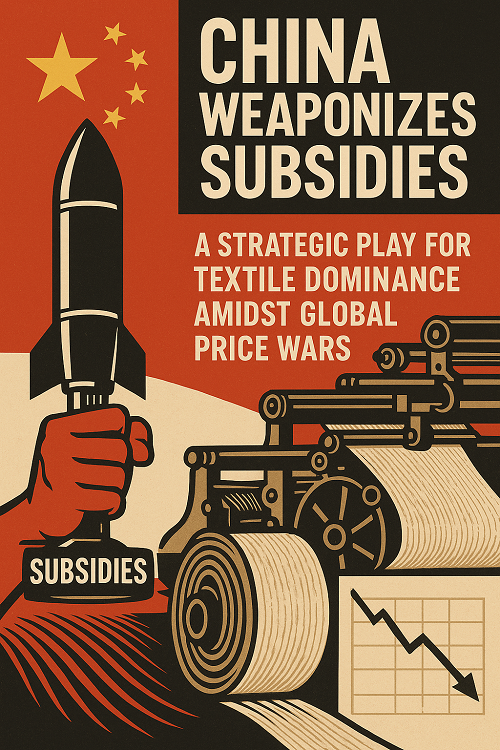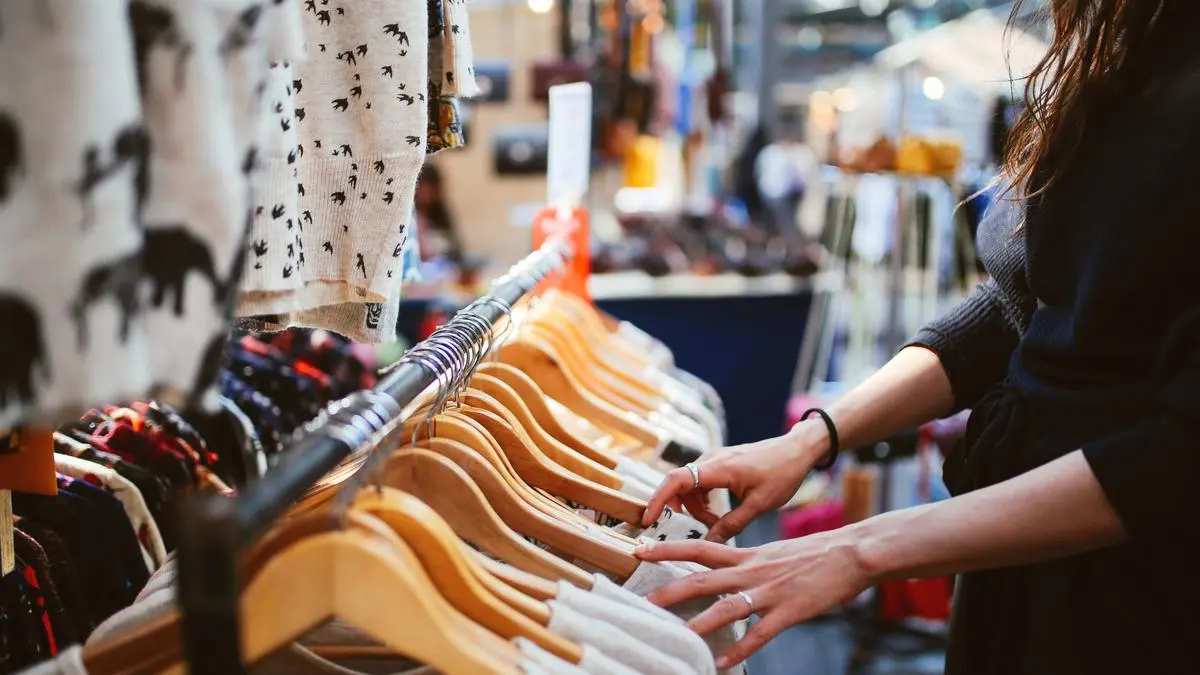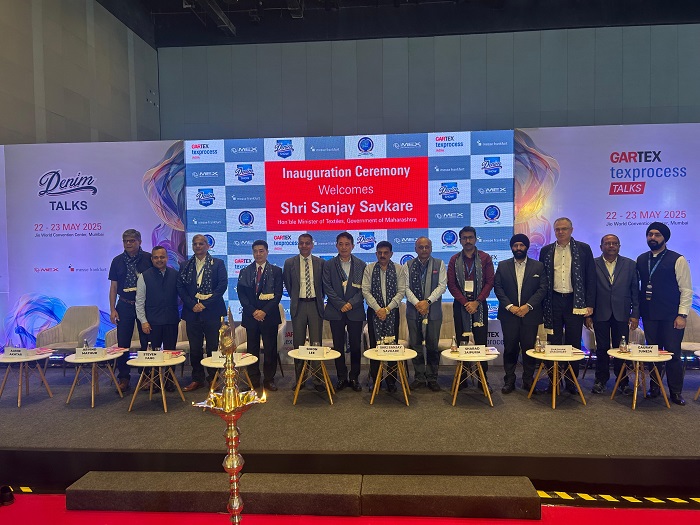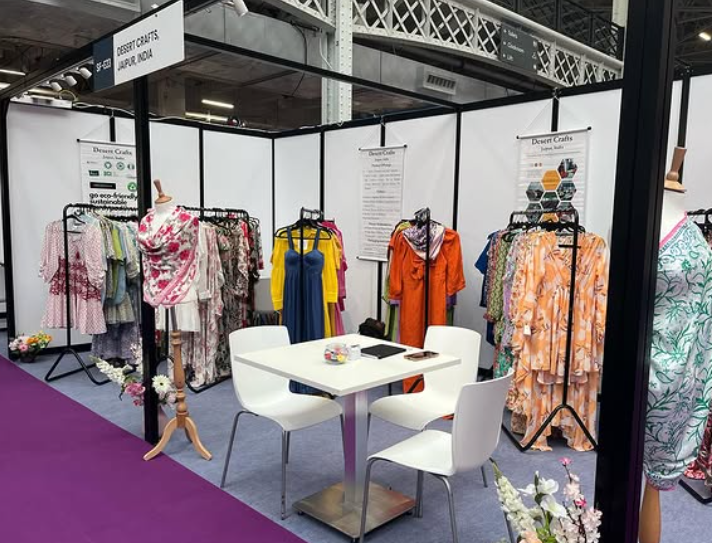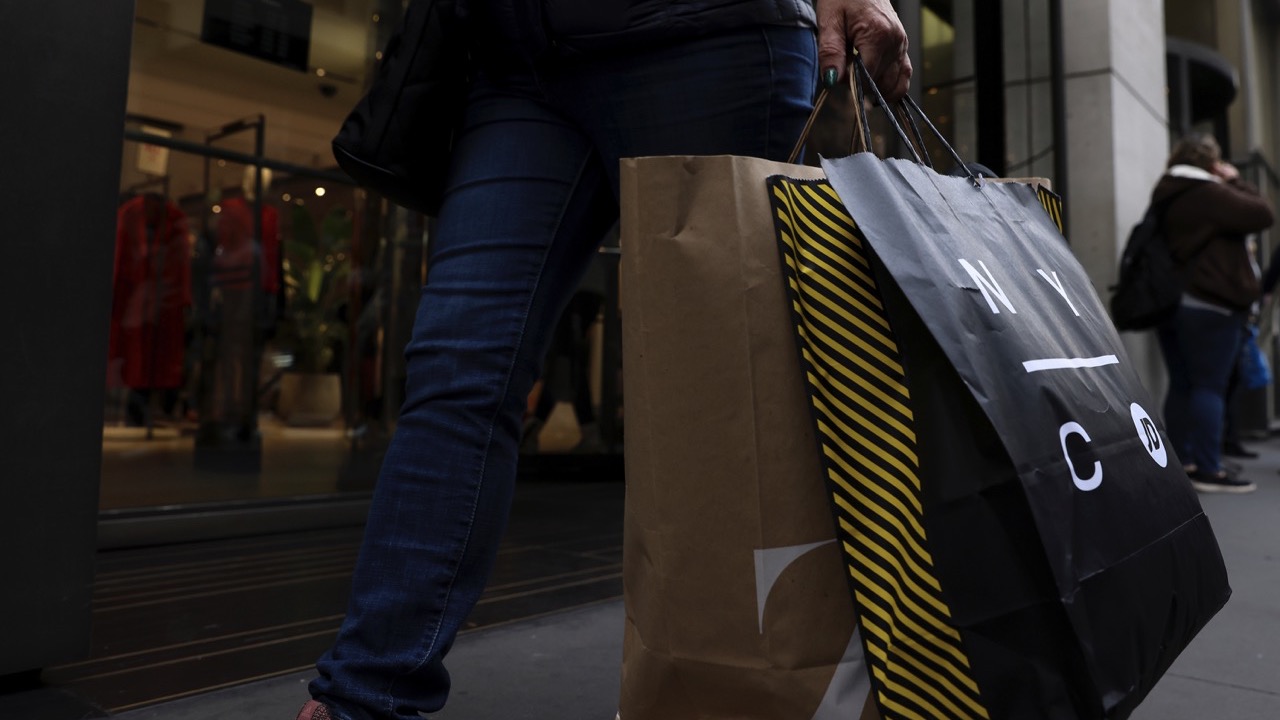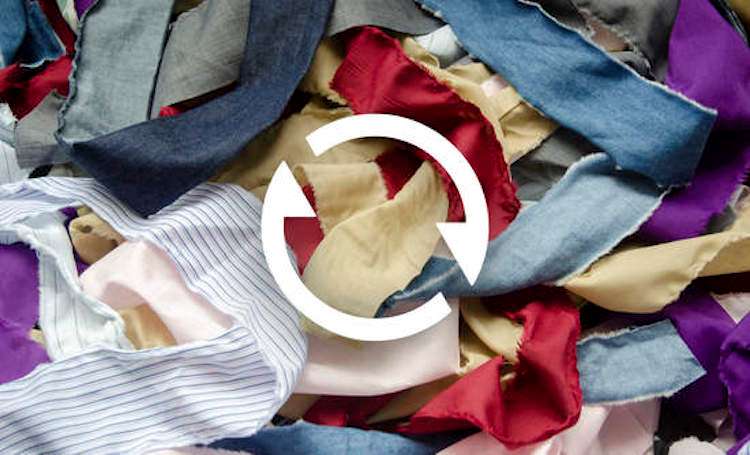
The fashion industry is being pushed fast and hard towards circularity and the EU is perhaps its most vocal implementer, having introduced key legislations that regulate the environmental and social impact of fashion. Hong Kong-based environmental NGO Redress that specializes in sustainability in Asia, released an industry report related to Asia’s manufacturing bases for the global fashion sector. The report clearly highlights Asian supply chains are nowhere near ready to deliver the need of the future and this worrisome as Asia is the global manufacturing hub for textiles and apparel.
As Christina Dean, Founder, Redress, supported by the VF Foundation points out, the three main gaps are: design knowledge, financial challenges in an extremely price-sensitive sector and leadership skills to steer Asia towards fashion circularity in a meaningful way. The report was presented at a panel discussion at Fashion Summit Hong Kong, Asia's sustainable fashion event, as well as at Shanghai Fashion Week.
Design knowledge gap hinders transition
It’s the time for a now or never approach in Asia, where organizations that support fashion circularity and expert and experienced designers collaborate to conceptualize and implement circularity best practices to ensure Asian hubs are able to fulfill the circularity model that is the future of fashion. Redress’ study comprised 195 global fashion professionals, the methodology being mainly in the form of quantitative questionnaires supported by 40 qualitative interviews with professionals working with organizations that produce apparels for Europe, China and South East Asia.
Almost 79 per cent respondents acknowledged the current design knowledge gap that is going to be a significant obstacle for circularity to be implemented. The two main factors to bridge the gap were identified as: education and capacity building. It is going to be vital for Asia’s manufacturing hubs to understand that the first step towards achieving circularity is based on product design that sources sustainably, builds in longevity and factors in recyclability. Capacity building includes turning manufacturing plants to widen their scope to suit the manufacturing of sustainable and recyclable items.
Financial challenges
Apart from the existing design knowledge gap, financial barriers are yet another challenge that the Asian fashion sector requires to iron out. Having positioned itself as the most affordable region for sourcing, most manufacturing hubs operate on compromised margins that leave little room for investing in transitioning to sustainable and circular fashion’s supply chain. In this context, the senior managements of manufacturing companies have not shown much enthusiasm to plough back funds towards building capacity as well as the restructuring of the linear model into a circular one. One may also add that Western buyers have a large role to play because they might espouse the need for fashion to be circular but are not willing to undergo a price recalibration that comes with an entire manufacturing sector realigning itself. For both parties, the vendor and the buyer, the mind-set is short-term gain focused rather than looking ahead to deliver on sustainable fashion in tangible ways.
The transition could be a rocky
Analyzing the report begets the question how can Asia, the region that produces nearly 60 per cent of apparel for worldwide consumption, not deliver to the growingly stringent regulations bring imposed on the global fashion sector? How will it affect the worldwide trade? These are important questions that Western markets are looking at. The cost-efficiency of Asian manufacturing hubs have been the biggest attraction but as expected, may not be sustainable as positive environmental and social impact will draw up a heftier price tag. The moot point is will investors be ready to take the plunge to transition or withhold knowing any shift in pricing could bring about seismic changes amongst Western buyers.

As the third-largest global textile manufacturer, Indian textile segment has always played a pivotal role in global textile production and is currently targeting $250 billion milestone by 2030. The industry is one of the largest sources of employment generation with over 27 million women employees. Technical textiles are a new high-tech segment that holds a lot of promise for global exports.
Analysts say rapid industrialization in developed countries and high-tech fabric production will help global segment to grow from $723 billion in 2023 to $859 billion by 2028, at a CAGR of 3.52 per cent. Both natural fiber composites obtained from plants and animals like cotton, silk, linen, wool and hemp along with conventional fibers are finding extensive application in global textile production, automotive industry for interior and exterior use as well as the pharmaceutical industry. With growing usage, technical textiles segment is set to lead sector growth with a projected CAGR of 15 per cent.
Improved GDP boosts textile growth
A recent Confederation of Indian Industries (CII) report “Decadal Outlook for Textile Industry: Threads of Transformation for Textile Industry” tabled at the recent Texfuture 2023 conference, highlights many important aspects of the textile industry. It predicts the contribution of textiles industry to the GDP will more than double from 2.3 per cent to about 5 per cent by 2030. Even the Gross Value Added (GVA) is expected foresee consistent annual growth of 9 per cent from 2021 to 2028.
In Maharashtra, the launch of ‘Textiles Policy 2023-28’ is a big step in its progressive journey as it has an ambitious goal of attracting global investments worth Rs 25,000 crore along with creating jobs for over 5 lakh people in the state, especially women. India is currently among the top five global exporters across categories viz, natural fibers, MMF, spun yarn, filament yarn, woven fabric, and home textiles. Both the central and state governments have launched some progressive industry-specific schemes that showcase India’s technological strides and commitment to sustainability.
Various schemes and incentives have been introduced aimed at promoting the sector, such as the Amended Technology Upgradation Fund Scheme (ATUFS), Production-Linked Incentive (PLI) Scheme for man-made fibers and technical textiles, National Technical Textile Mission, PM MITRA scheme. These initiatives have not only provided financial assistance but also encouraged investments in modern technology and infrastructure, thereby improving overall competitiveness, explains Devroop Dhar, Co-Founder, Managing Director of Primus Partners.
Need to overcome hidden challenges
Many challenges lie ahead for the government to positively drive the textile sector’s growth. The main challenge lies in the industry’s supply chain that largely comprises of MSMEs and is thus highly fragmented, which results in suboptimal coordination and resource utilization. Quality training programs are not enough as just 5 per cent of the sector is organized whereas the unorganized sector is still relies on traditional methods due to financial constraints lack of knowledge. Too much reliance on traditional labor-intensive technologies hinders progress and the need of the hour is to include modern technologies to cash in on the textile industry’s immense export potential. Sustainability and circularity in the textile segment and new segments such as technical textiles will together improve the brand image of Indian textiles and spur growth.
The Association of the Nonwoven Fabrics Industry (INDA) has released the twelfth edition of its North American Nonwovens Industry Outlook report, providing detailed demand data from 2017 to 2022 and forecasts to 2027.
This comprehensive report analyzes across all nonwoven end-use markets, offering a holistic view of the North American nonwovens industry. Redesigned to support strategic business planning, the report utilizes current market trends and drivers to project market potential in dollar value, units, volume, and square meters.
"This report provides insights into nonwoven demand across short-life and long-life market segments," states INDA President Tony Fragnito. "The intelligence included is crucial for business leaders involved in asset management or operational planning."
Key features of the report include:
Economic and population drivers contributing to market growth in the U.S., Mexico, and Canada over the next five years.
Disposable, filtration, wipes, medical, and other applications.
Long-life durable sectors for transportation, building and construction, furnishings, geo and agro textiles, and apparel.
The YKK Corporation's Furusato-no-Mori (Hometown Forest), located in the Kurobe Manufacturing Center in Kurobe City, Toyama Prefecture, has been designated as a Nature Coexistence Site by Japan's Ministry of the Environment. This recognition comes as part of the company's ongoing commitment to coexist with nature, aligned with the "YKK Group Environmental Vision 2050."
The initiative aims to transform the Kurobe Manufacturing Center into a "factory in a forest" by planting 20,000 saplings of native species and restoring the Kurobe River alluvial fan's forests and waterside areas by 2034, marking the company's 100th anniversary.
The site's designation was attributed to several factors, including efforts to conserve local biodiversity, combat non-native species, and engage in regular monitoring through biological surveys and tree measurements. YKK has also joined the "30 by 30 Alliance for Biodiversity" to contribute to global conservation targets.
Furusato-no-Mori, which houses a rich variety of endangered species and serves as an educational hub, underscores YKK's commitment to sustainable practices and biodiversity conservation.
The Textile Technology Business Center (TTBC), established by the Partnership for Cleaner Textile (PaCT) program, serves as a knowledge hub for green technologies in the textile and RMG industry. TTBC facilitates knowledge sharing and business linkages between textile factories and technology suppliers, addressing the need for credible information and technology transfer.
Through technical training programs, knowledge-sharing sessions, and support for cleaner production, energy efficiency, and rooftop solar PV adoption, TTBC plays a pivotal role in building industry capacity. With over 103 B2B linkages, 58 workshops, and knowledge materials for over 2300 participants, TTBC has made significant contributions.
TTBC offers a range of services, including B2B linkages, tailored services, promotion of resource-efficient technologies, capacity building programs, and a networking platform. Its expertise lies in textile specialists, resource efficiency specialists, communication experts, and business development officers.
Recently taken over by BGMEA to ensure its continued operation, TTBC remains committed to empowering the textile industry with sustainable solutions, fostering innovation, and promoting sector growth.
YKK Corporation's Furusato-no-Mori (Hometown Forest) within the Kurobe Manufacturing Center (Kurobe City, Toyama Prefecture) has been designated a Nature Coexistence Site1 by Japan's Ministry of the Environment. Two sites in Toyama Prefecture, including Furusato-no-Mori, were certified out of the 122 sites (in 35 prefectures) certified for the first half of FY2023, the first year of the program.
This designation aligns with the "YKK Group Environmental Vision 2050" to promote coexistence with nature. The goal is to create a "factory in a forest" by planting 20,000 saplings of 20 species native to Kurobe City and restoring the forests and waterside areas on the Kurobe River alluvial fan by the company's 100th anniversary in 2034.
Factors contributing to the designation include:
Conservation efforts informed by local topography and river environment
Measures against non-native species and genetic makeup of the area
Independent and regular monitoring efforts through biological and tree surveys
Utilization as a site for environmental education
Jeanologia, a leading Spanish company in eco-efficient technologies, has unveiled the latest version of its groundbreaking jean-design software, eDesigner. This innovative tool transforms the virtual creation of garments, reducing samples by 80% and ensuring perfect reproducibility of production designs.
The new eDesigner boasts an intuitive interface, enhanced hyperrealism, and access to Jeanologia's expertise. The software also features the "Trace" tool, which utilizes AI to generate hyper-realistic designs, and the Lightbrary, a comprehensive gallery of inspiring designs.
eDesigner takes digitization to the next level by enabling the digital creation of patterns and garments, significantly reducing the need for physical samples. This innovation not only conserves resources but also minimizes the carbon footprint associated with sample production.
Acting as a fluid communication channel, eDesigner connects designers, wash developers, brands, and manufacturers, streamlining the design validation process and accelerating production. Carmen Silla, Jeanologia's Marketing Director, highlights the tool's impact on efficiency, time-to-market, and sustainability, positioning eDesigner as a transformative and eco-efficient digital tool for the textile industry.

Asian garment exporters are in a tizzy because of sharp drop in US apparel imports almost 25.35 per cent on a year-on-year basis in the last eight months, after having remained almost constant for the last decade. Although the slight drop from 74.2 per cent in 2020 to 72.8 per cent in 2021 from the ASEAN countries was attributed to the pandemic but is worrying is that the figure is increasing and there is not much change.
Worrying trade stats
During the first 8-month of 2023 from January to August, the US imported apparel worth $15.98 billion, falling massively by around 25.35 per cent on a year-on-year, reveals US trade department Office of Textiles and Apparel (OTEXA) stats. This translates to a value loss of around $5.43 billion in imports in just one year and greatly affects the post-Covid business momentum of 2022 that was picking up. In this $15.98 billion segment, the share of cotton apparels was $6.77 billion of total imported value which dropped 29.51 per cent, while man-made fiber (MMF) apparels saw a 23.41 per cent drop to $8.58 billion during this period.
In August, US textile and apparel imports were around 8.62 billion sq. mt. down 5.7 per cent year-on-year and 4.8 per cent month-on-month. Import value stood at $10.09 billion which is 23.4 per cent year-on-year but still up 0.6 when calculated month-on-month in this review period. However, the accumulated import value was 62.55 billion sq. mt. a cumulative decrease of 17.8 per cent, which was far more than the usual over the last decade.
Reasons for decline
A study on the patterns of US apparel imports by Sheng Lu, Associate Professor, Department of Fashion & Apparel Studies at the University of Delawar identifies, many reasons for the decline. First, is while US apparel imports has gradually recovered, the overall import demand remained weak, with trade volume still experiencing a decrease of approximately 17-18 per cent as compared to 2022. Although the price of US apparel imports is more stabilized, inflation issues still rule the US economy.
Second, due to its seasonal pattern, the market share of some countries has been higher since June. China, ASEAN countries and Bangladesh have over 64 per cent of total US apparel imports in July 2023 which is a notable increase from earlier. The US fashion companies are currently concentrating on expanding their sourcing base to reduce supply chain risks and geopolitical tensions.
Sheng Lu in his analysis says, the third factor for the recent decline is that in spite of an apparent rebound in exports to the US, China has continued to experience a decline in market share mainly due to the adverse business environment which was 3 per cent lower at 24.1 per cent in July this year as compared to 27.2 per cent in July 2022. Fourth reason is, the US apparel imports from CAFTA-DR members of the free trade agreement between the US and a group of smaller developing economies has remained stagnant or worsened with US apparel imports from CAFTA-DR in 2023 being about 20 per cent lower than that of 2022.
However with the Christmas and New Year festivities around the corner, ASEAN garment exporters remain hopeful the recent fall in US textile and apparel imports will smoothen out and the usual trade figures will be back on track again.

The African fashion industry is currently booming as demand increases from a rapidly expanding middle class in the urban domestic segment as well as from global consumers who are showing more interest in the high quality of craftsmanship in Africa’s cultural tradition garments. Vibrant hues and colorful fabrics, such as wax and printed-dyed cotton are extremely popular around the world.
An inaugural report by UNESCO has estimated the annual African textile, clothing and footwear exports at around $15.5 billion. Although the textiles and garments segment may be the second largest sector with agriculture as the primary segment, Africa’s full potential is yet to be realized. African designers are constrained by poor infrastructure, sparse investment, limited intellectual property protection as well as difficulties accessing new markets and sourcing quality materials.
UNESCO has estimated the deficit in Africa’s textile, clothing, and footwear trade is around $7.6 billion which is a result of stifled local production that has led to the arrival of cheap or free second-hand clothing from abroad.
Re-authorization of AGOA will help garment segment
The earnings from the continent's fashion industry, currently valued at $15.5 billion in exports annually could triple over the next decade with suitable investments and infrastructure, says UNESCO. To help Africa progress faster, US officials will be visiting South Africa in November to meet African trade ministers who will face calls to re-authorize the African Growth and Opportunity Act (AGOA) which expires in 2025. Apparel trade has always been the story of AGOA, which was set up in 2000 to help develop African economies. African apparel exports have reached nearly $1.4 billion last year, which is double the amount pre-AGOA.
Analysts are optimistic as US companies reduce their dependence on China, there is more opportunity for African garment manufacturers to take that place. However, if the AGOA is not renewed soon with proper clarity, capturing a part of China market could be difficult for Africa, as the lack of renewal laws is hitting new investments from abroad. Many US companies are now planning to cut investments or bypass Africa by June 2024, if there is no clarity on the trade laws.
While deepening global polarization Moscow, Beijing and other Western countries are all leveraging trade and economic ties as they increase efforts to court African governments. Many US senators are now pushing for quick AGOA renewal to counter influences from these countries. Even the African governments are wanting a similar re-authorization of the 10-year AGOA extension that was approved by Congress in 2015 with bipartisan support, ideally before an expected US election year pause on new trade legislation, although that looks extremely unlikely..
Fashion weeks and social media propel segment growth
However, in the middle of this economic and political turbulence, Africa’s fashion industry is growing rapidly to meet local and international demand, and fashion events such as the Lagos Fashion Week continue successfully. This annual event features a mix of designers of Nigerian and African fashion and provides a market for local brands to showcase their vast portfolio of apparel and footwear.
The fashion segment continues in social media as well as in movies, films, and fashion shows, in the form of trendy and traditional wearable garments, textiles, accessories and handicrafts in the international markets. With growth in e-commerce and Africa’s young population of 1.3 billion people which is set to double by 2050, the fashion industry in local and global settings will soon be ready to take on the world.
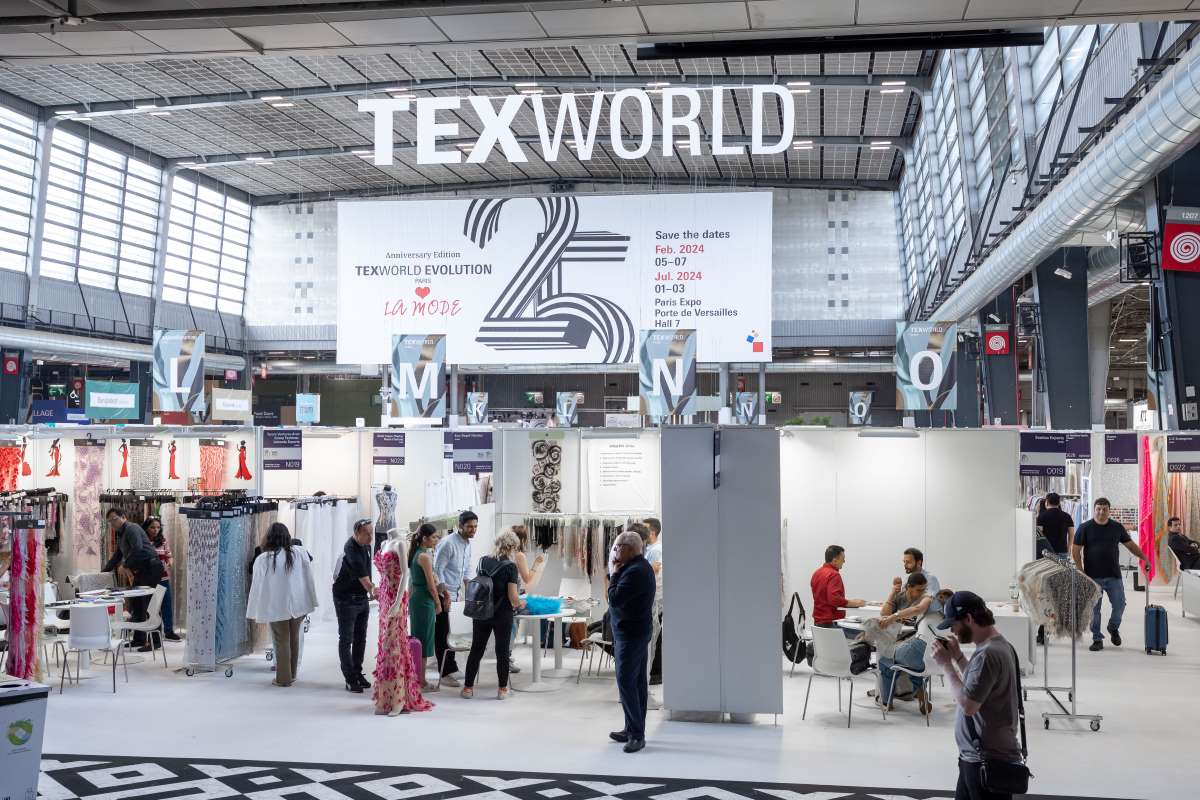
Texworld Evolution Paris is poised to make a triumphant return to the Paris Expo Porte de Versailles from February 5th to 7th, 2024, with a resounding 75% of exhibition space already booked by September. This remarkable response underscores the event's international appeal and the burgeoning interest of the Asian textile industry in strengthening ties with European markets.
For fashion buyers, this edition holds strategic importance, serving as a vital platform for connecting with international suppliers of fabrics, materials, and finished products. This interaction plays a pivotal role in shaping the Spring-Summer 2025 collections. The event's trends presentation and international conference program enhance the experience.
Leading fashion-sourcing nations, including China, India, Türkiye, Korea, Indonesia, Pakistan, and Thailand, will participate, with major national pavilions further enriching the event. A notable surge in knitwear and activewear performance textiles reflects evolving fashion trends.
A new feature of the 2024 session is the consolidation of both fairs in Hall 7 at Paris Expo Porte de Versailles, making it more convenient for visitors to locate specific expertise and products. Sustainable development takes center stage, with the introduction of Econogy, a fusion of ecology and economic development, guiding Texworld Evolution Paris toward a more sustainable future.
Visitors can use the Econogy Finder to access an online directory of sustainable textile suppliers, and exhibitor stands meeting these criteria will be marked with visible Econogy symbols. The event will also feature conferences on sustainability, featuring certifiers, industry experts, and NGOs, highlighting the industry's commitment to eco-friendly practices and innovative experiences in production and distribution. Texworld Evolution Paris 2024 promises a vibrant and eco-conscious future for the global textile industry.
- 1
- 2
- 3
- 4
- 5
- 6
- 7
- 8
- 9
- 10
China Weaponizes Subsidies: A strategic play for textile dominance amidst global…
Despite the narrative of a global apparel pivot away from China, the reality on the ground paints a different picture.... Read more
Shift in fashion's value proposition, can speed and sustainability coexist?
Expanding on the recent LinkedIn post by Lubomila Jordanova, CEO & Founder of Plan A and Co-Founder of Greentech Alliance,... Read more
Gartex Texprocess India 2025 kicks off in Mumbai with global focus
The 2025 Mumbai edition of Gartex Texprocess India opened its doors at the Jio World Convention Centre on May 22,... Read more
EU Horizon T-REX project data reveals challenges for textile-to-textile recyclin…
A new report from the EU Horizon T-REX (Textile Recycling Excellence) Project, while focused on piloting a data model to... Read more
Source Fashion to showcase global ethical sourcing solutions in July 2025 editio…
Source Fashion, the UK’s leading responsible sourcing show, is set to return from 8-10 July 2025 at The Grand Hall,... Read more
CHIC September 2025 to return in Shanghai with ‘Fashion Picnic’ theme
China’s leading fashion trade event, CHIC 2025 (September), will return to the National Exhibition and Convention Center in Shanghai from... Read more
US consumer confidence dips amidst economic uncertainty
In April 2025, the US consumer sentiment recorded a shift as confidence levels dipped, indicating potential headwinds for the economy.... Read more
Secondhand on the rise in Europe as it readies for a €26 bn fashion revolution b…
Across Europe, pre-owned garments are shedding their ‘used’ label and stepping into the spotlight as a mainstream force. A new... Read more
India-Bangladesh Trade in Turmoil: Retaliatory measures threaten regional commer…
The burgeoning trade relationship between India and Bangladesh has hit a turbulent patch, marked by a series of retaliatory trade... Read more
Peeling Back the Fabric: Glimpact study gives true ecological threads of apparel…
A groundbreaking new study by Glimpact, has pulled back the curtain on the often-obscured environmental footprint of the apparel industry,... Read more

